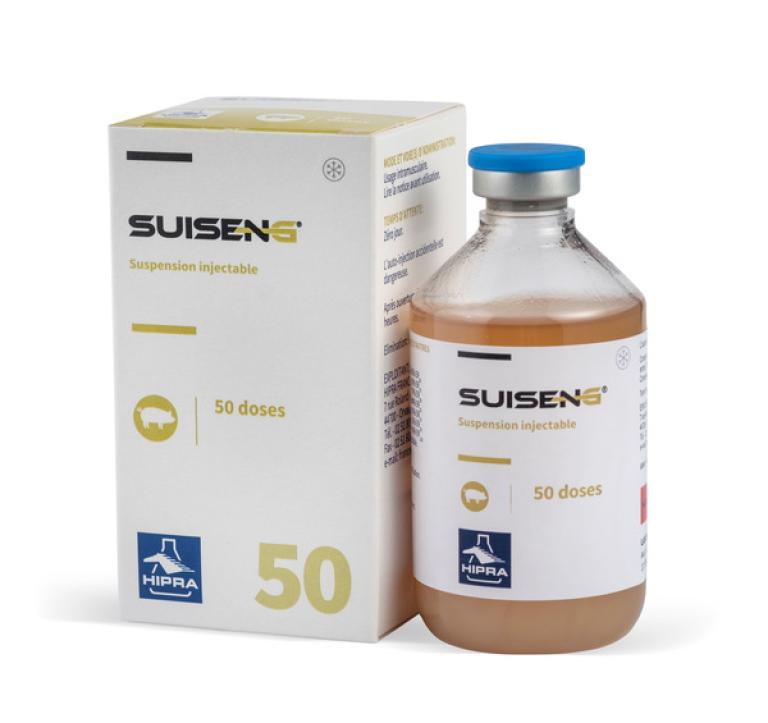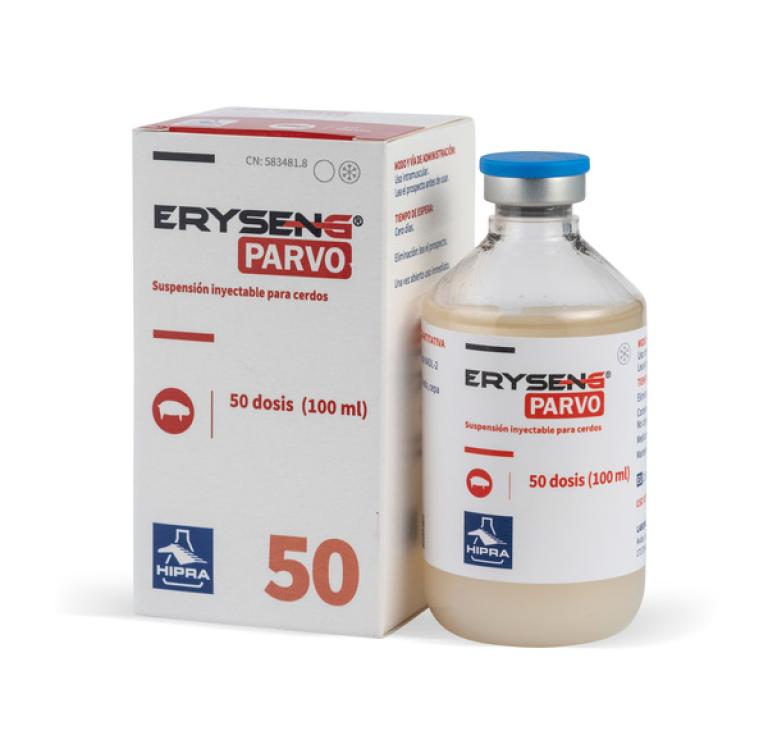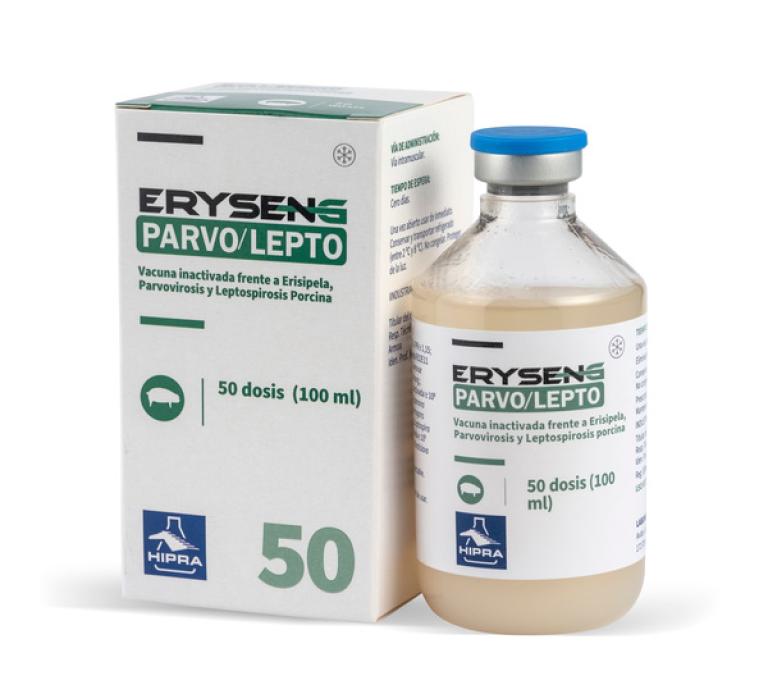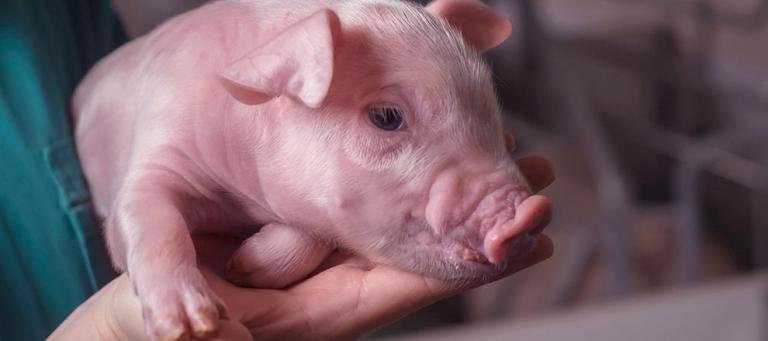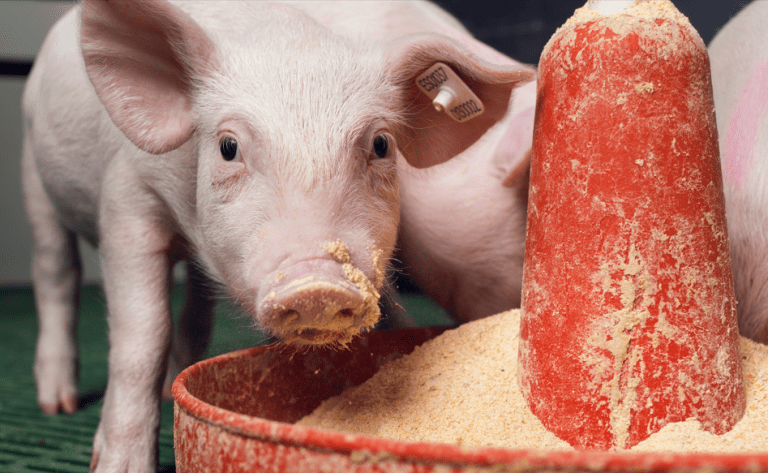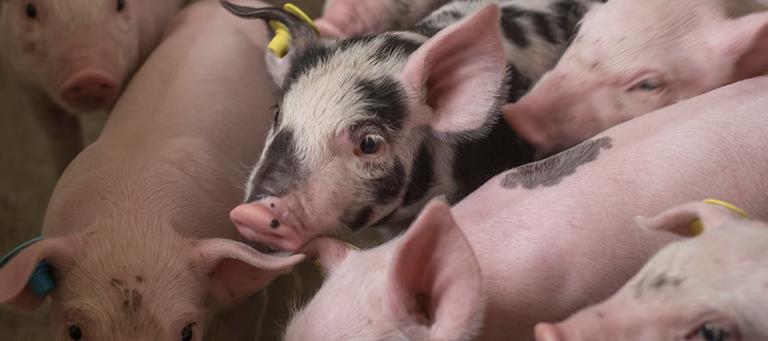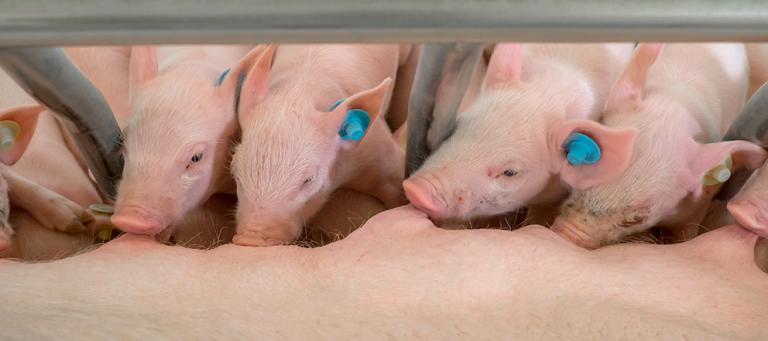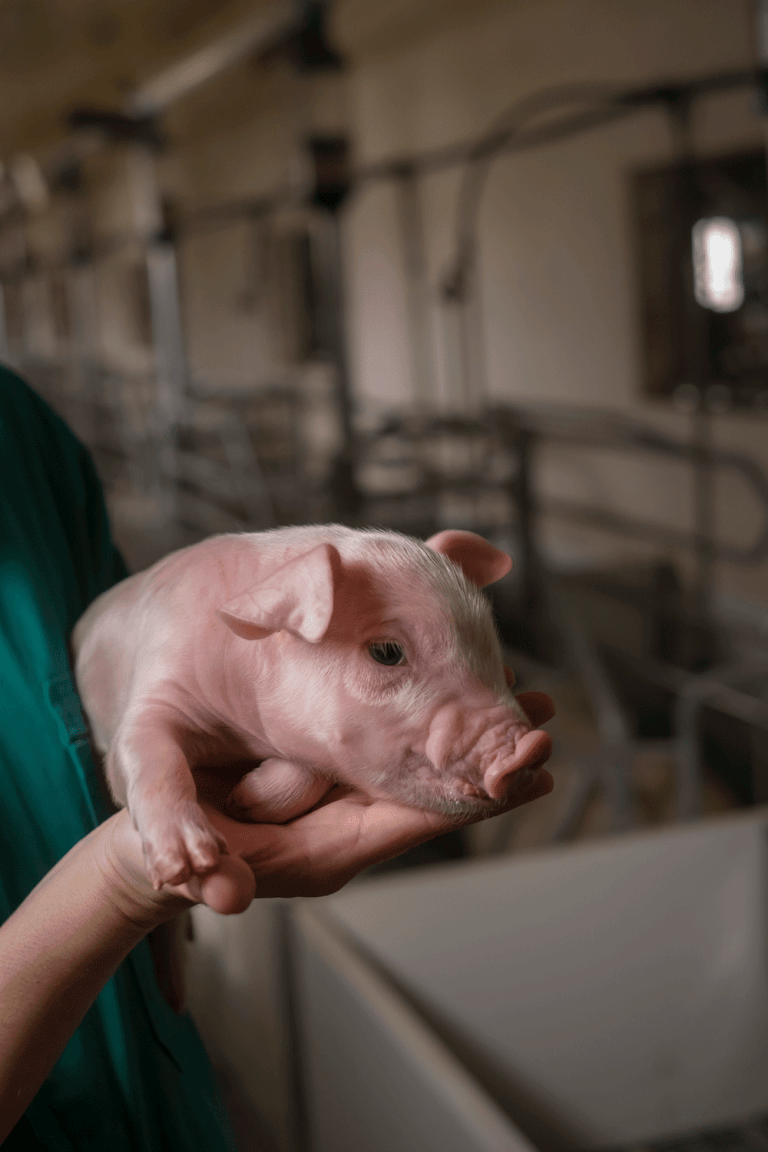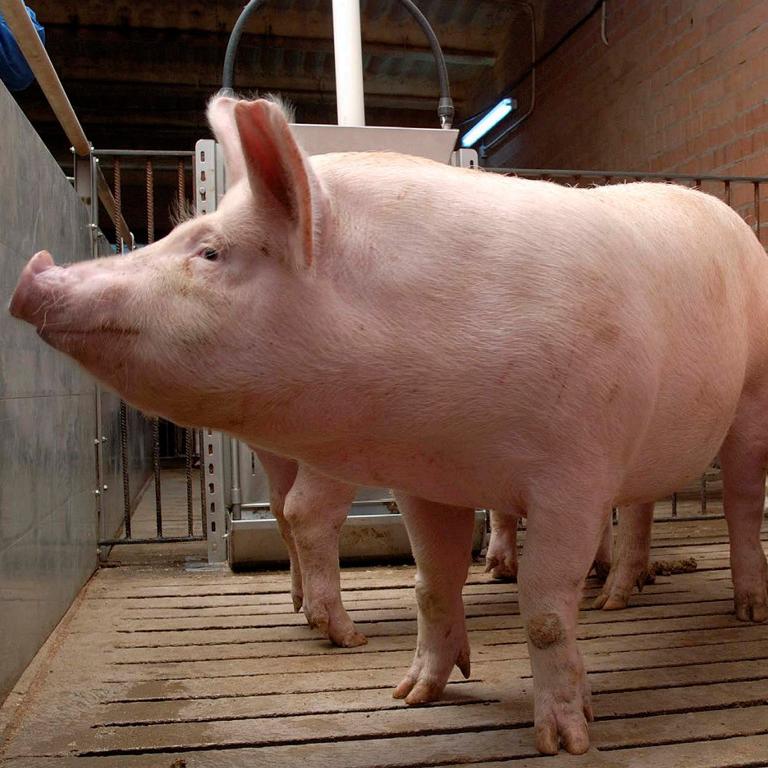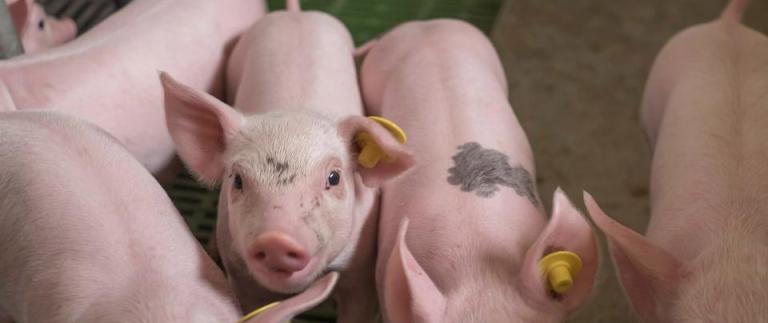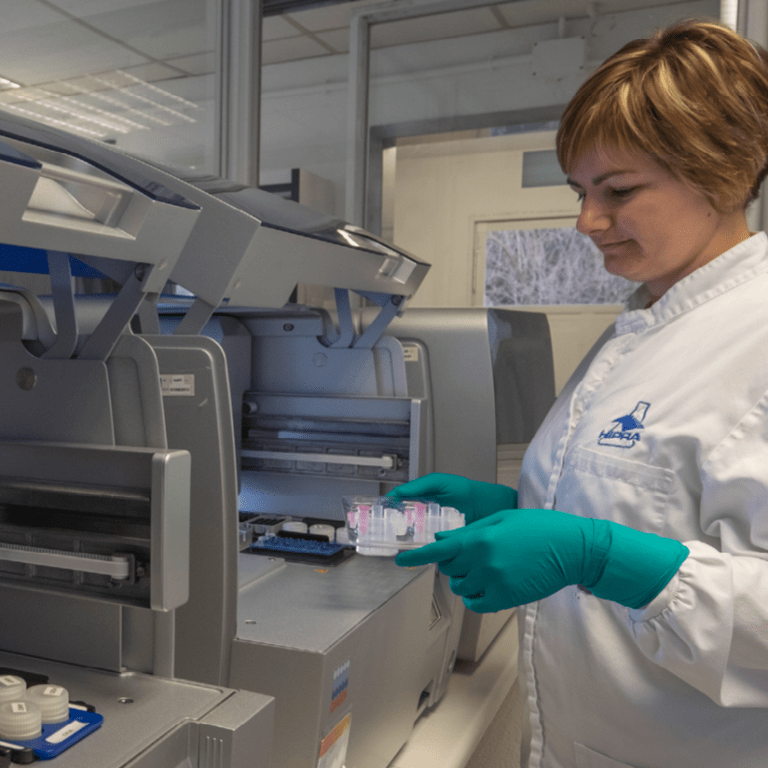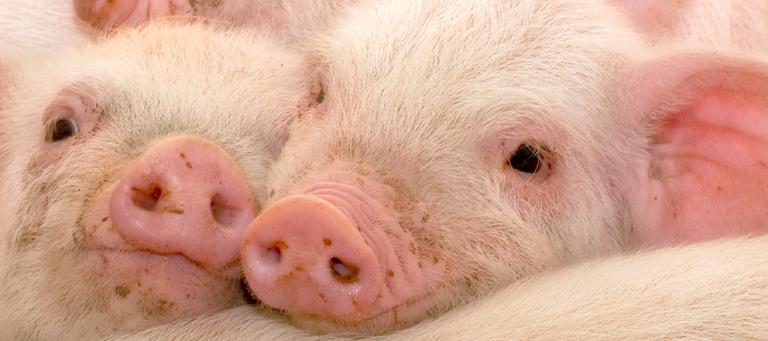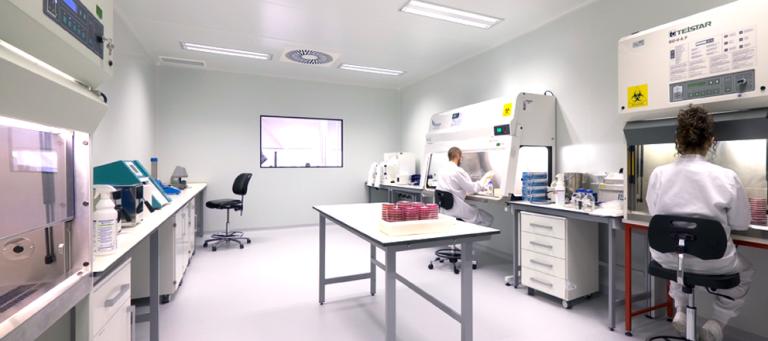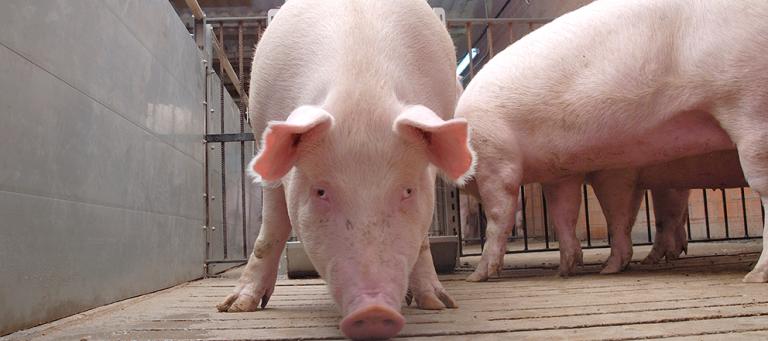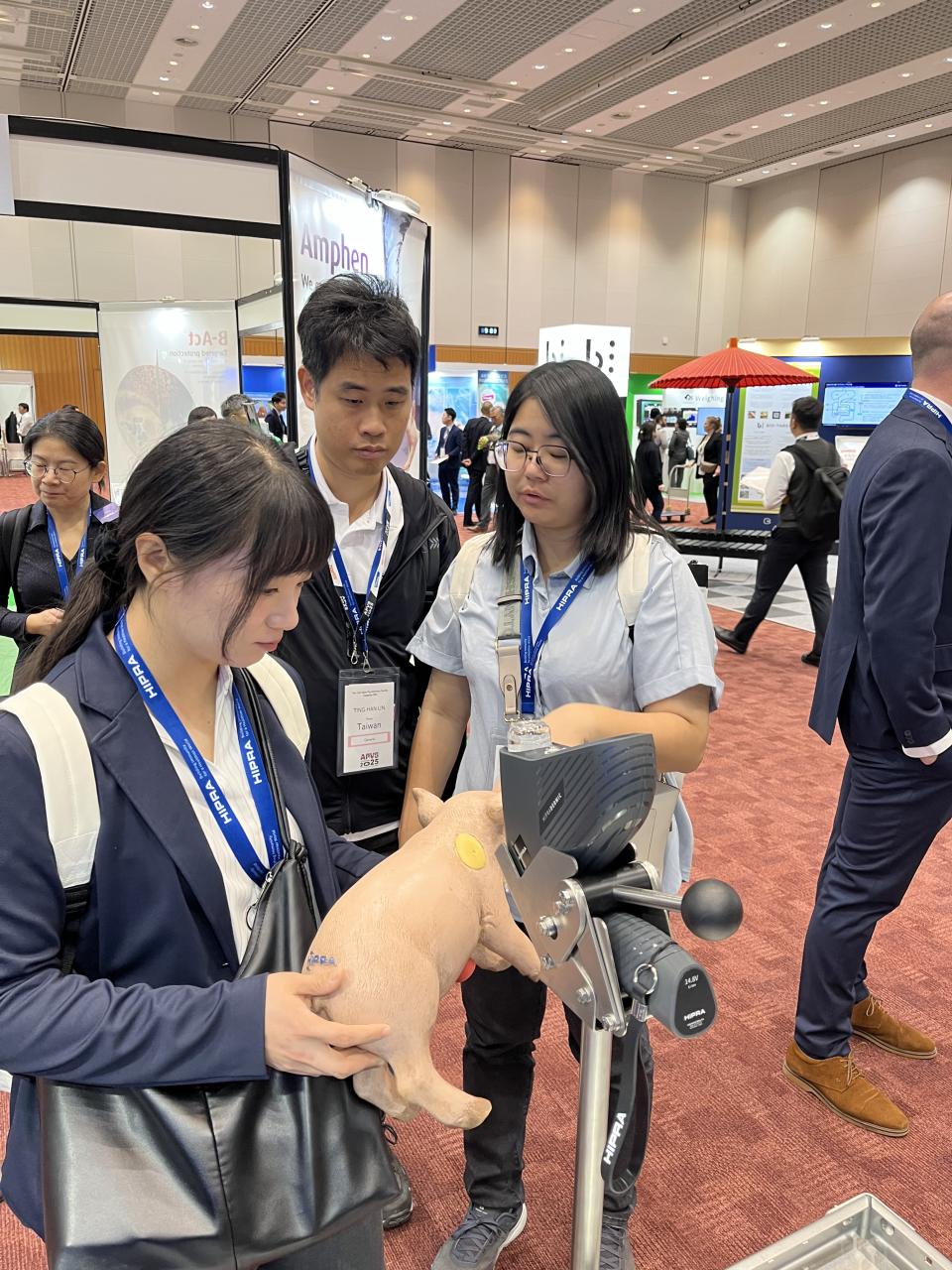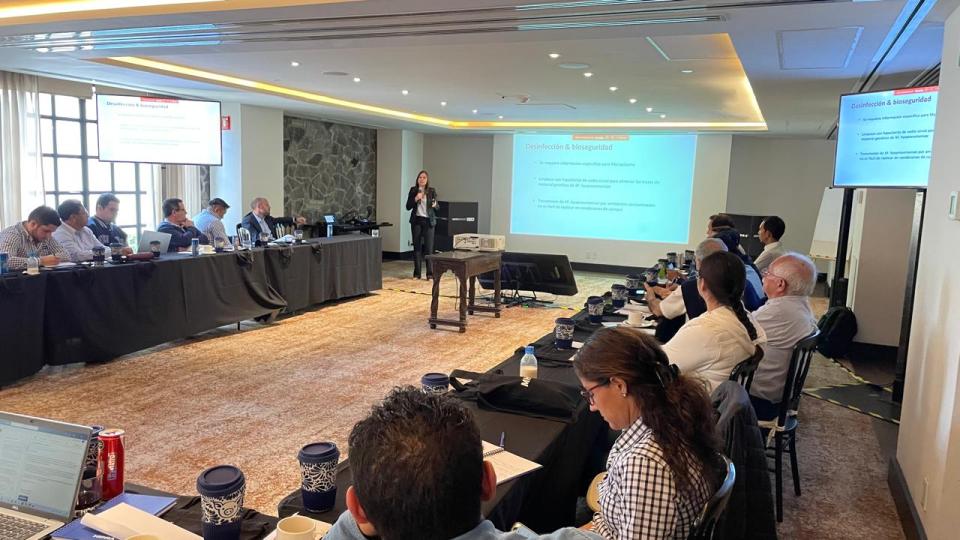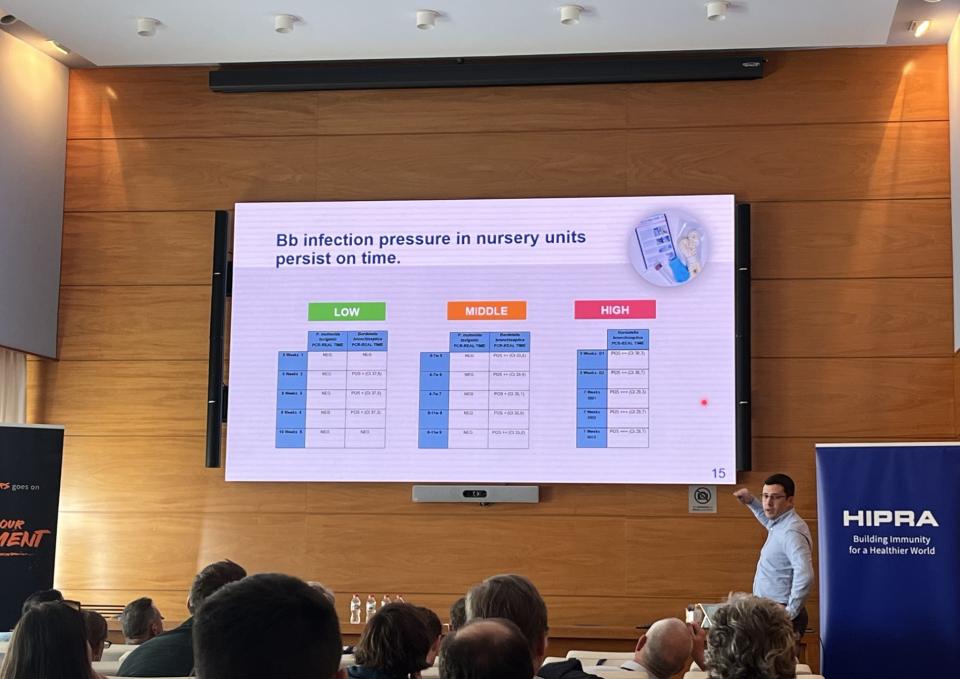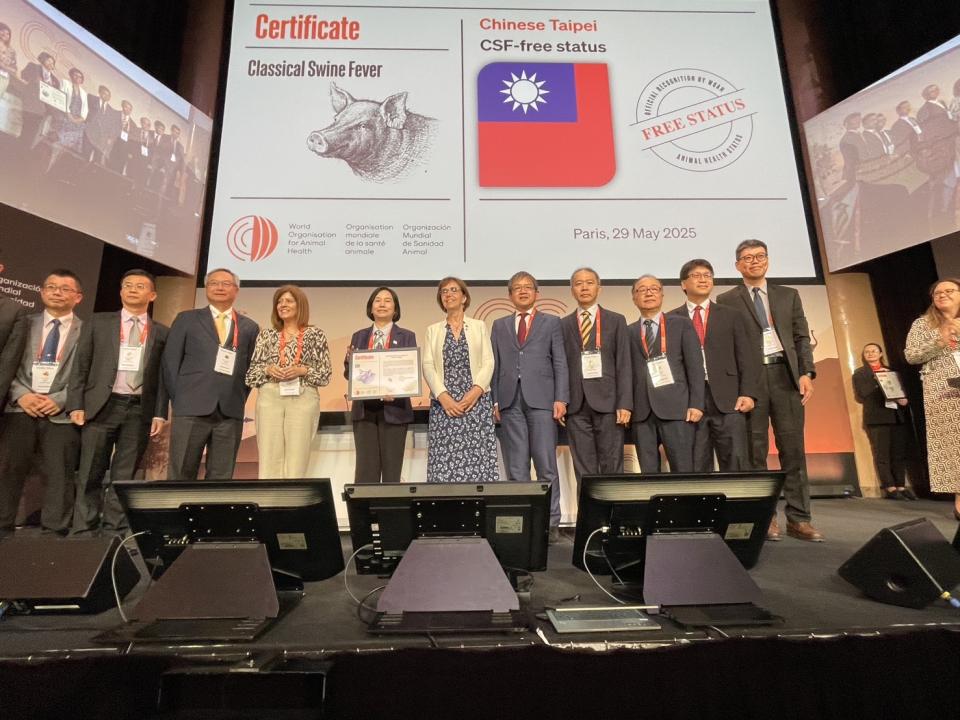AETIOLOGY:
Pneumonia caused by Mycoplasma hyopneumoniae is an infectious disease that affects pigs of all ages, but especially growing animals. It tends to present a high morbidity and low mortality and profoundly affects the average daily gain and feed conversion rate.
TRANSMISSION:
Transmission occurs primarily by direct contact between infected animals that shed the bacteria or secretions containing the bacteria and susceptible animals.
CLINICAL SIGNS:
It affects all ages, but it is not clinically frequent in animals under 6 weeks of age. It usually has an incubation period of 2 to 8 weeks.
Clinical symptoms include:
- Develop acute or chronic pneumonia.
- Severe shortness of breath.
- Prolonged non-productive cough.
- Variable mortality, depending on co-infections
LESIONS:
Bronchiole-interstitial pneumonia characterized by a cranioventral distribution and a lobular/multifocal pattern. There is a clear demarcation between normal and affected tissue, which appears firm to the touch and purple red in color.
On section, the pneumonic areas present a uniform coloration and a catarrhal exudate.
DIAGNOSIS:
It is based on clinical signs and necropsy, sometimes combined with histology of the lesions. However, they do not provide a specific diagnosis and in farms that produce breeding animals, or in special cases, it may be necessary to confirm the diagnosis with one or more of the following tests: ELISA, serological tests, immunofluorescence tests, PCR and finally culture and identification of Mycoplasma hyopneumoniae.
Enzootic pneumonia must be differentiated from Influenza, PRRS, Glässer, and other secondary bacterial infections.
TREATMENT, PREVENTION AND CONTROL:
Many antibiotics have been used in feed or water for disease prevention. The efficacy of antibiotics in controlling M. hyopneumoniae losses may be related to either antimycoplasmal activity or suppression of other concomitant secondary infections. Macrolides, pleuromutilins, lincosamides, fluoroquinolones... have been shown to be effective against M. hyopneumoniae and have been used for preventive purposes both during lactation in order to reduce vertical transmission; as well as in transition phase and entry to bait, in order to attenuate horizontal transmission. In recent years, the development of multiple resistances to antibiotics has been described, which in many cases are behind failures in prevention and treatment programs against the disease.
Vaccines against M. hyopneumoniae have been available for more than two decades. We must consider that they reduce the severity of clinical symptoms, as well as lesions, but they do not eliminate them, nor do they prevent colonization of the ciliary epithelium.
Vaccines are currently used both in piglets to attenuate the lesions and production losses caused by the disease, as well as in replacement in order to control the transmission of M. hyopneumoniae from primiparous sows to their litters.




